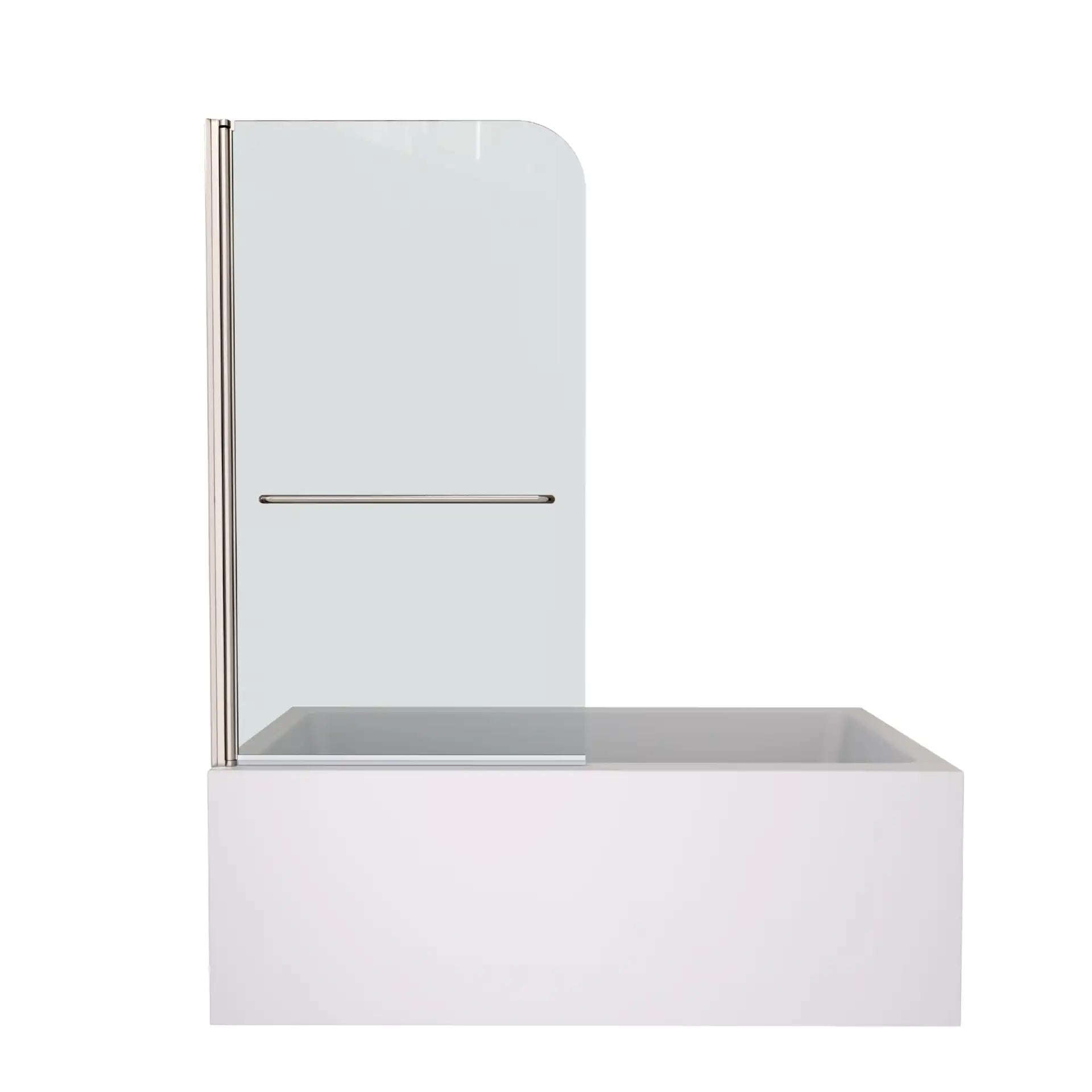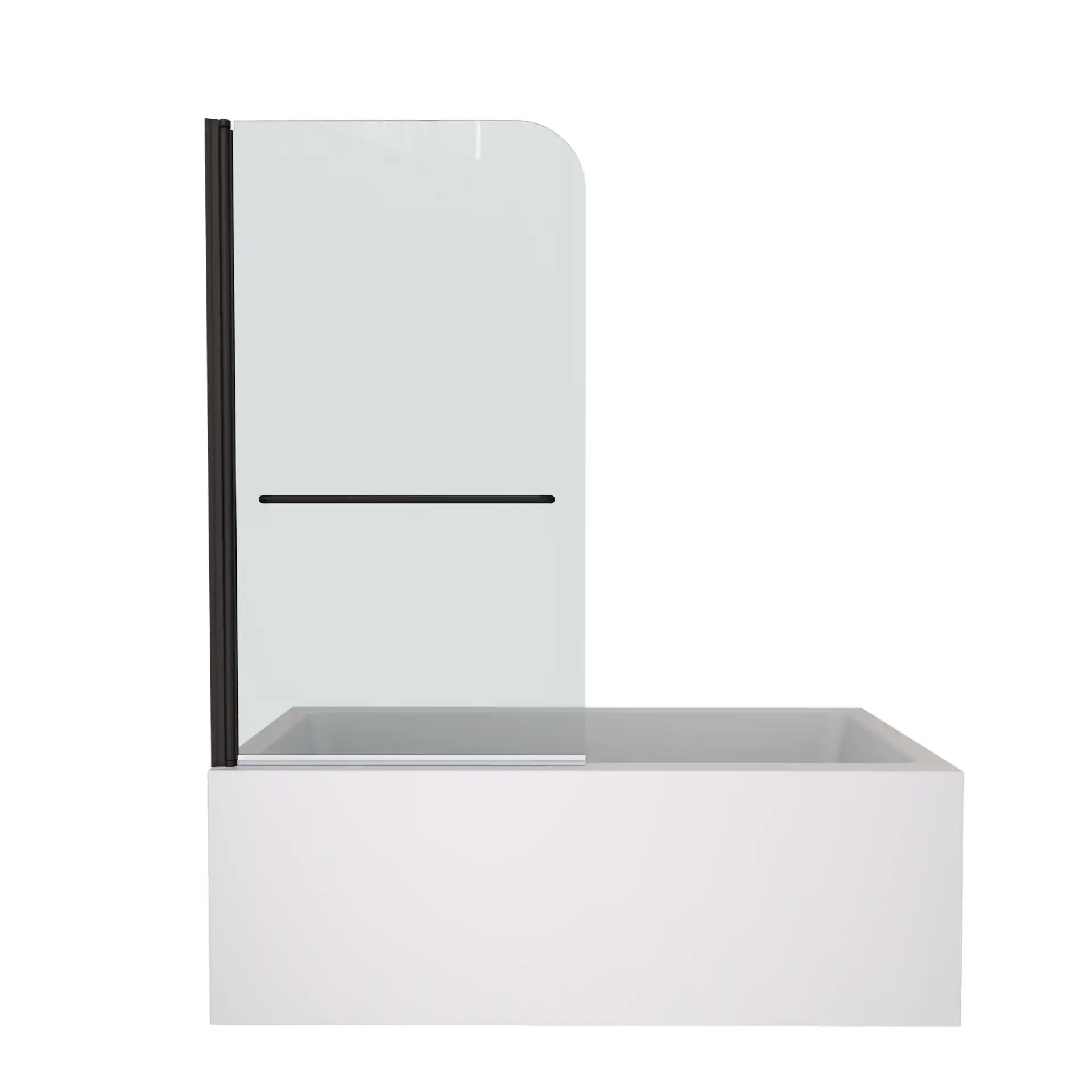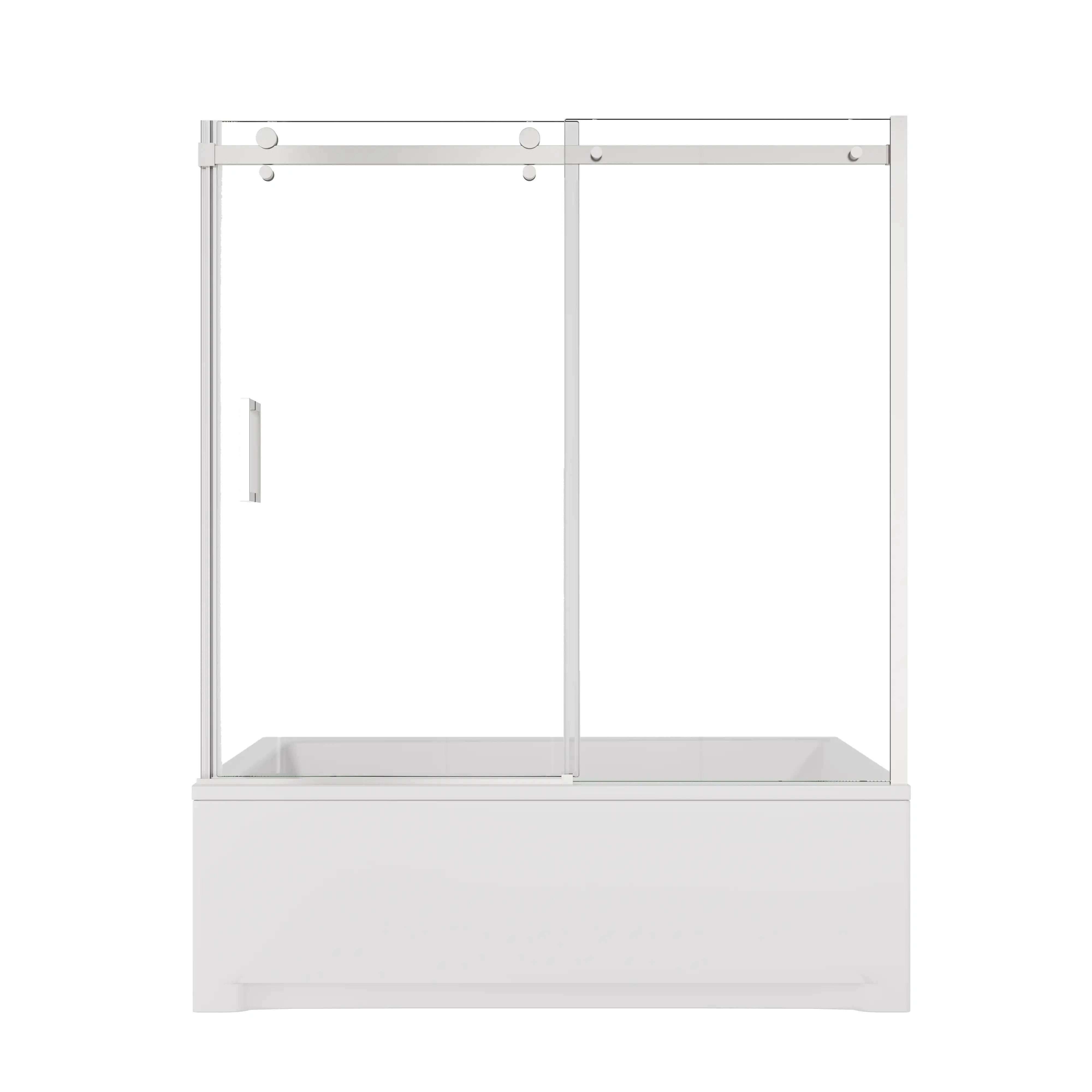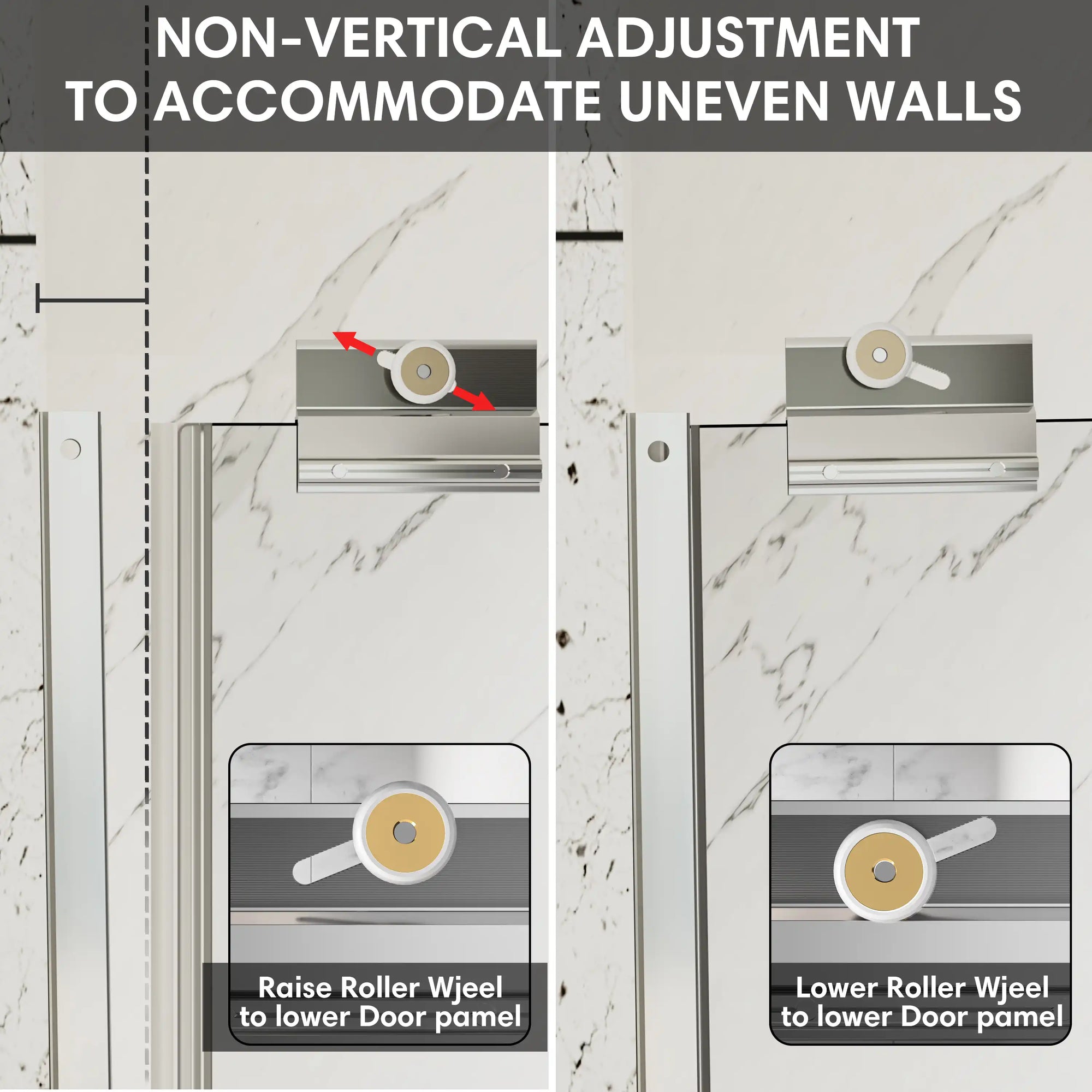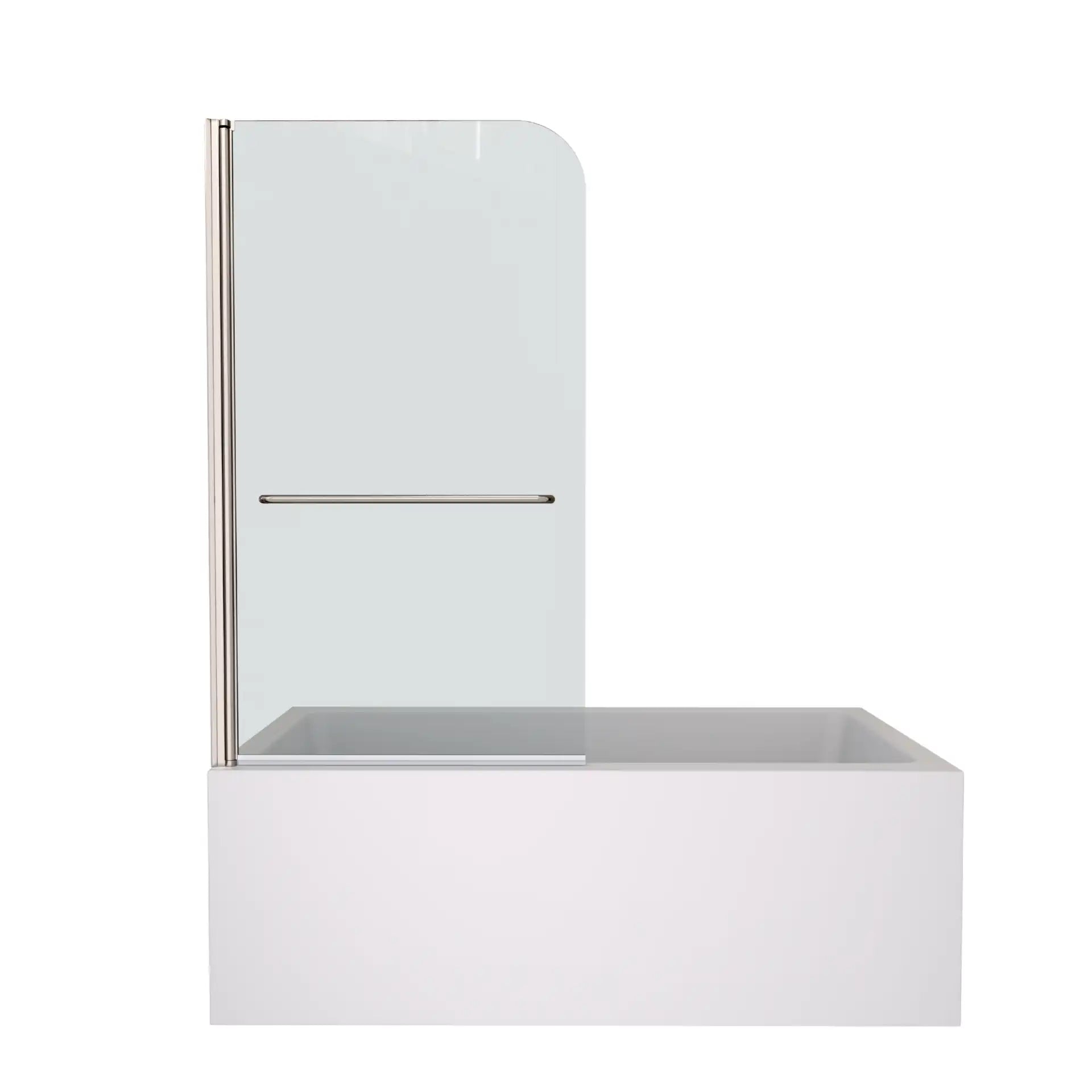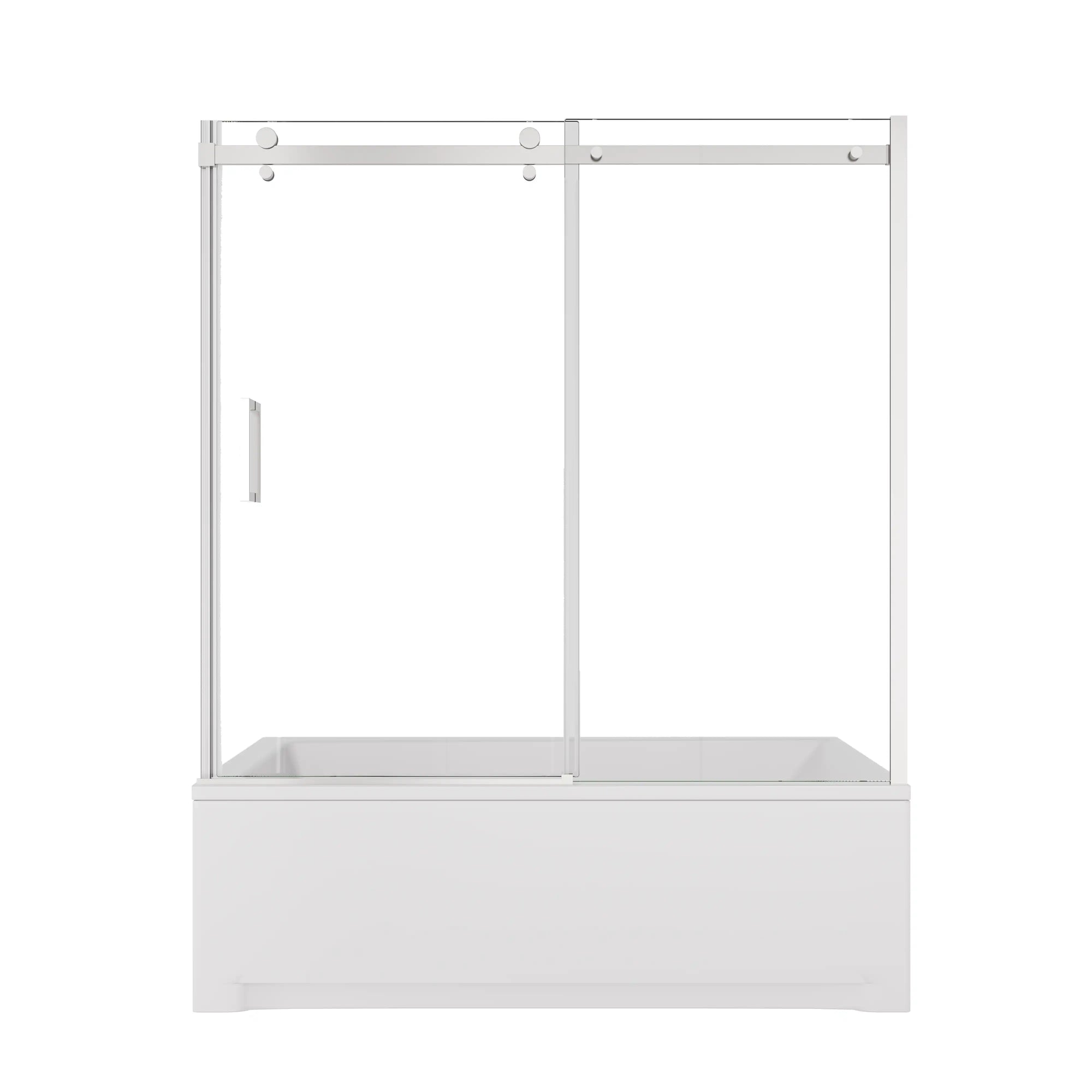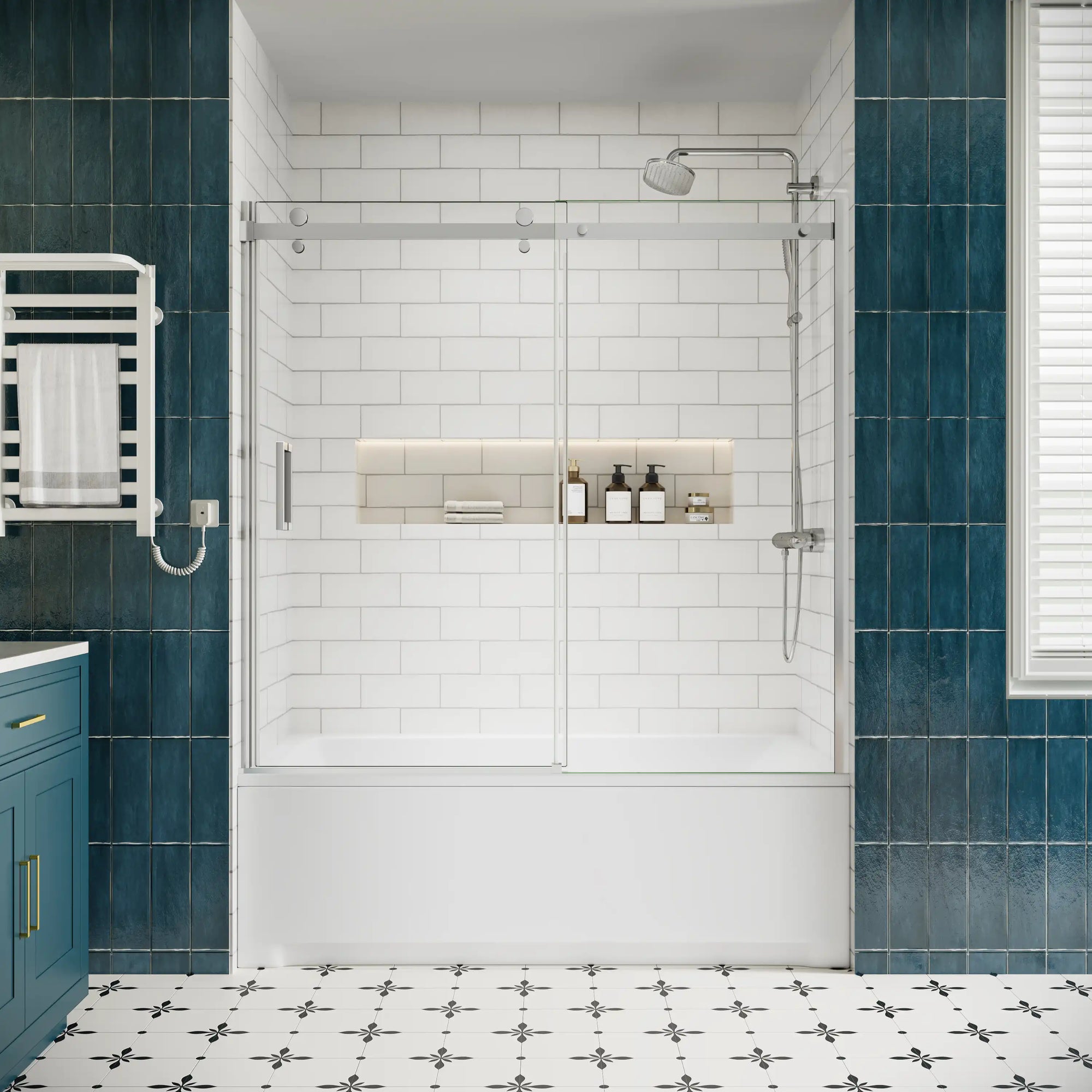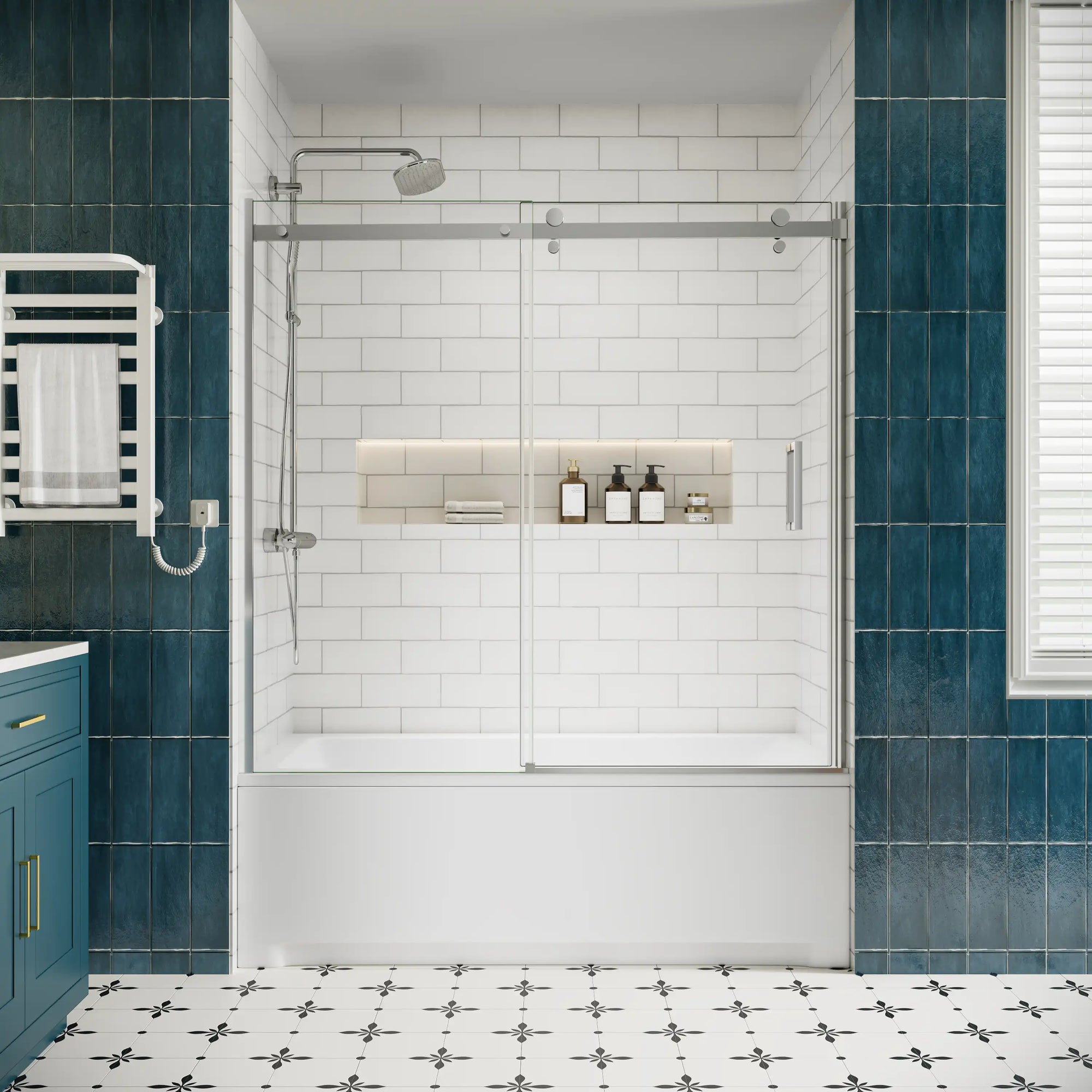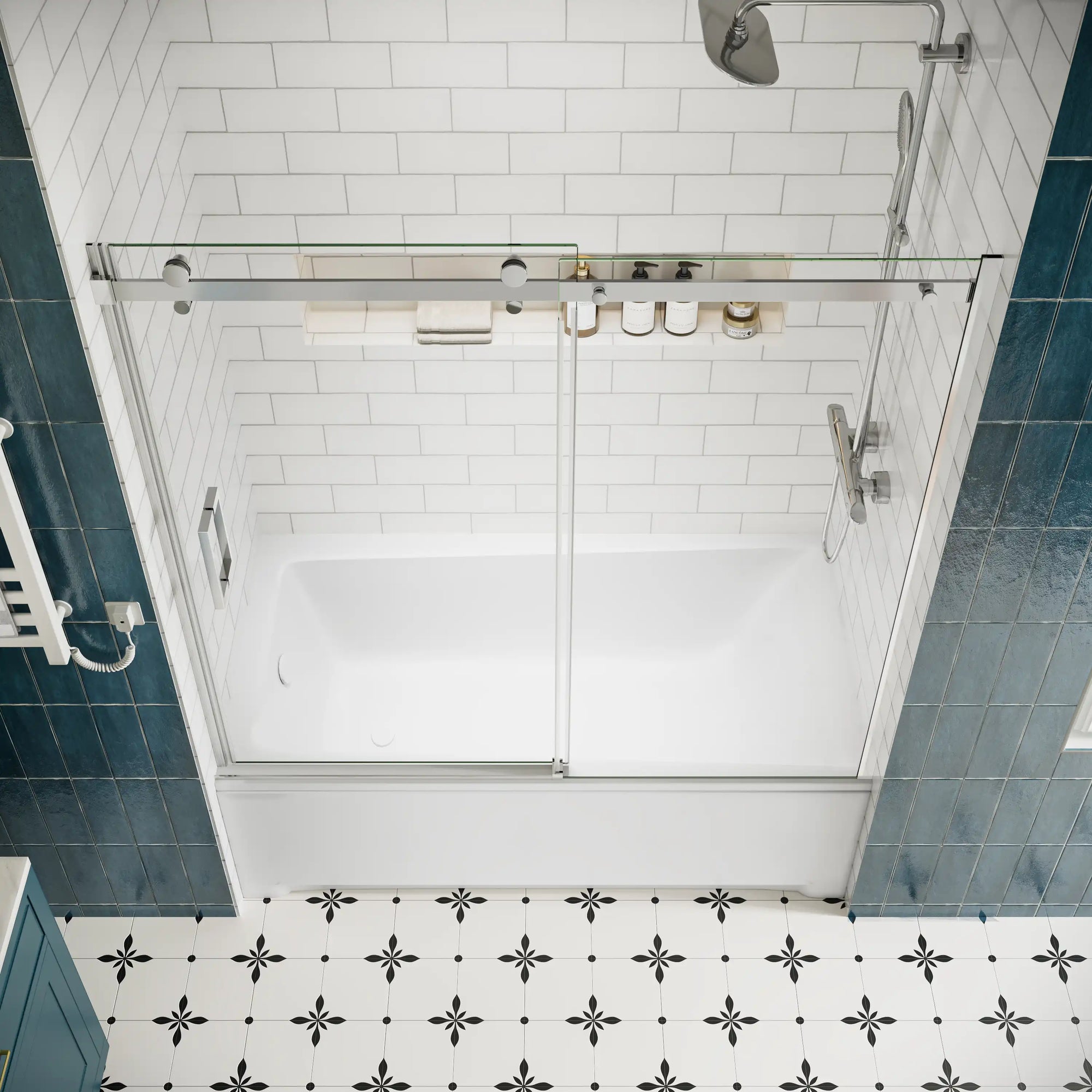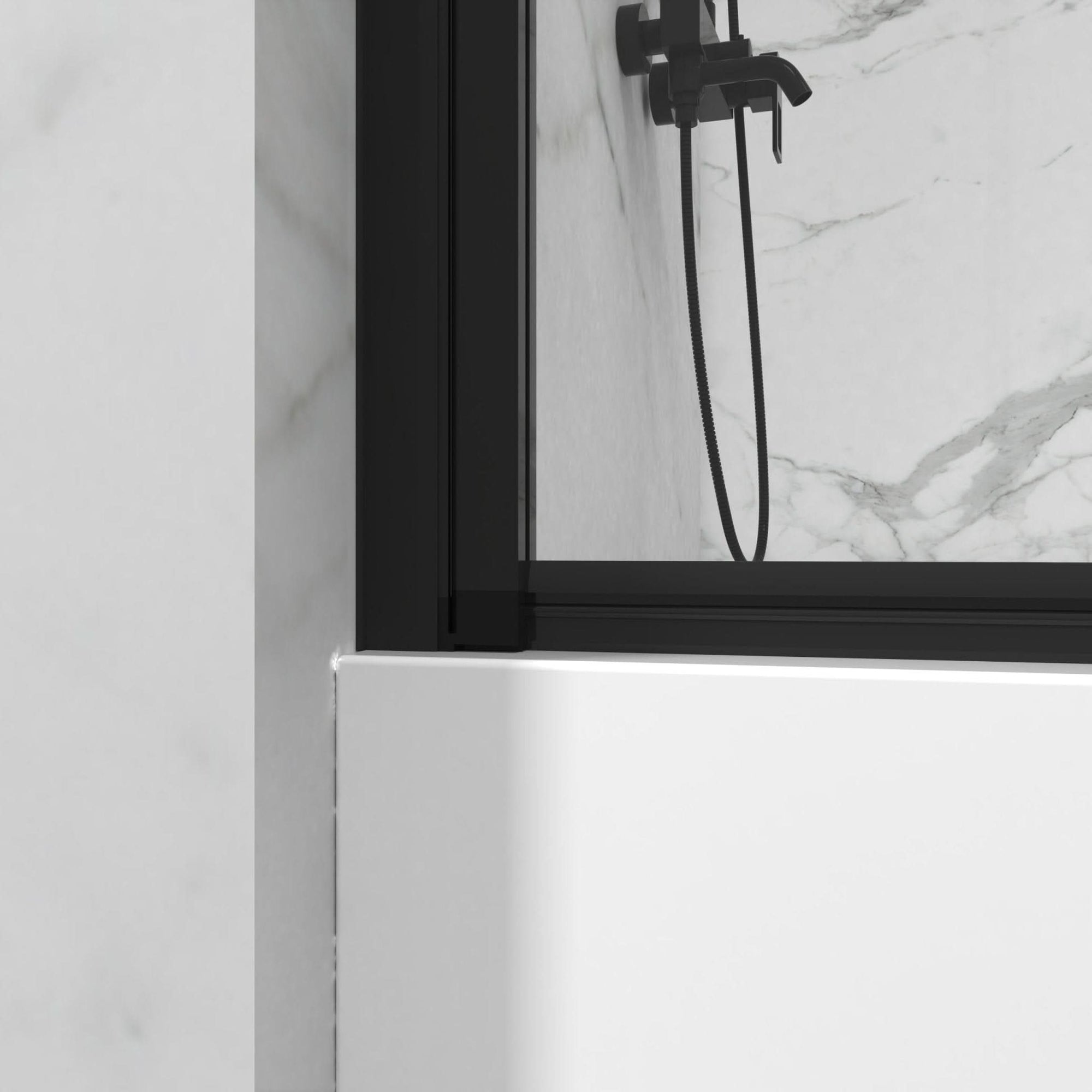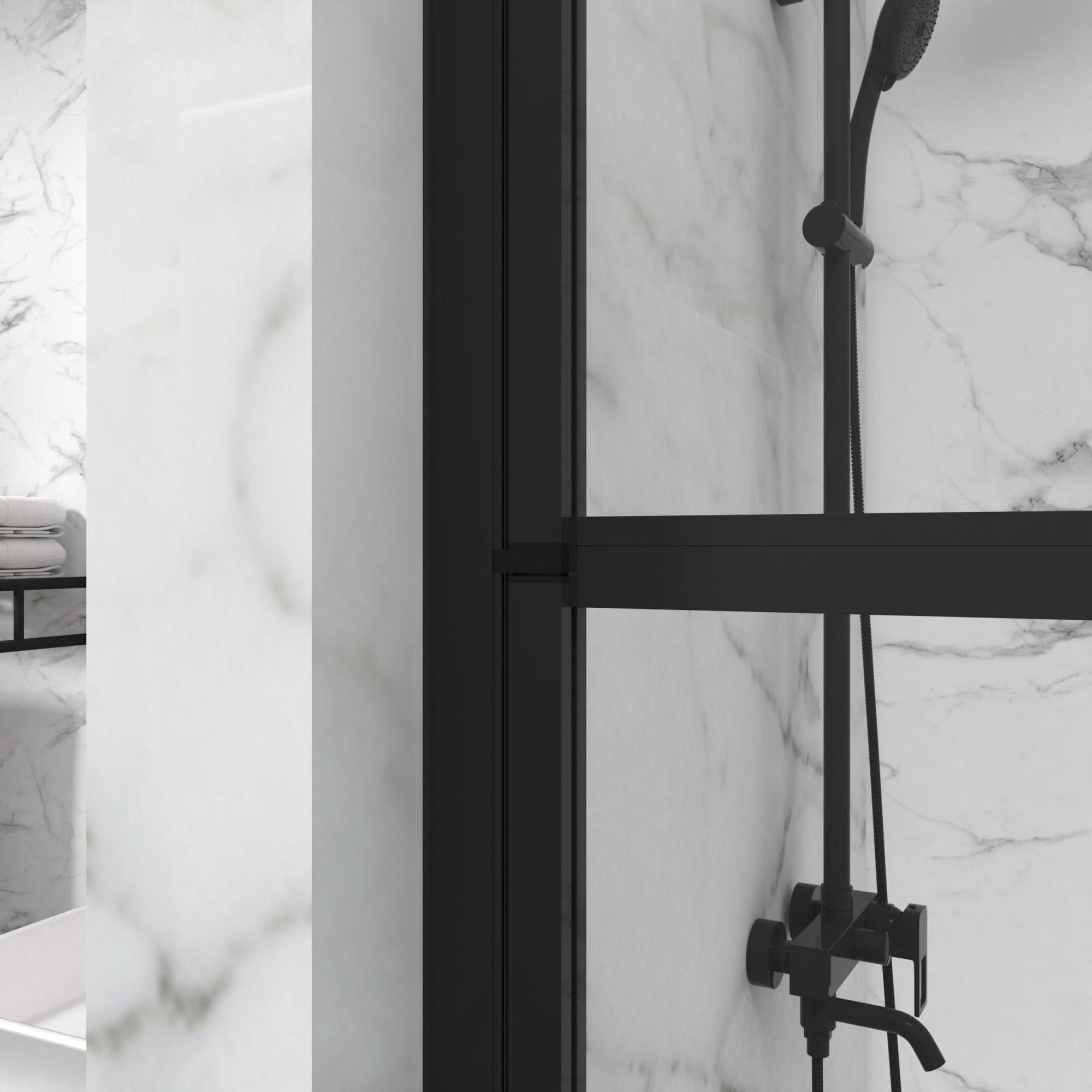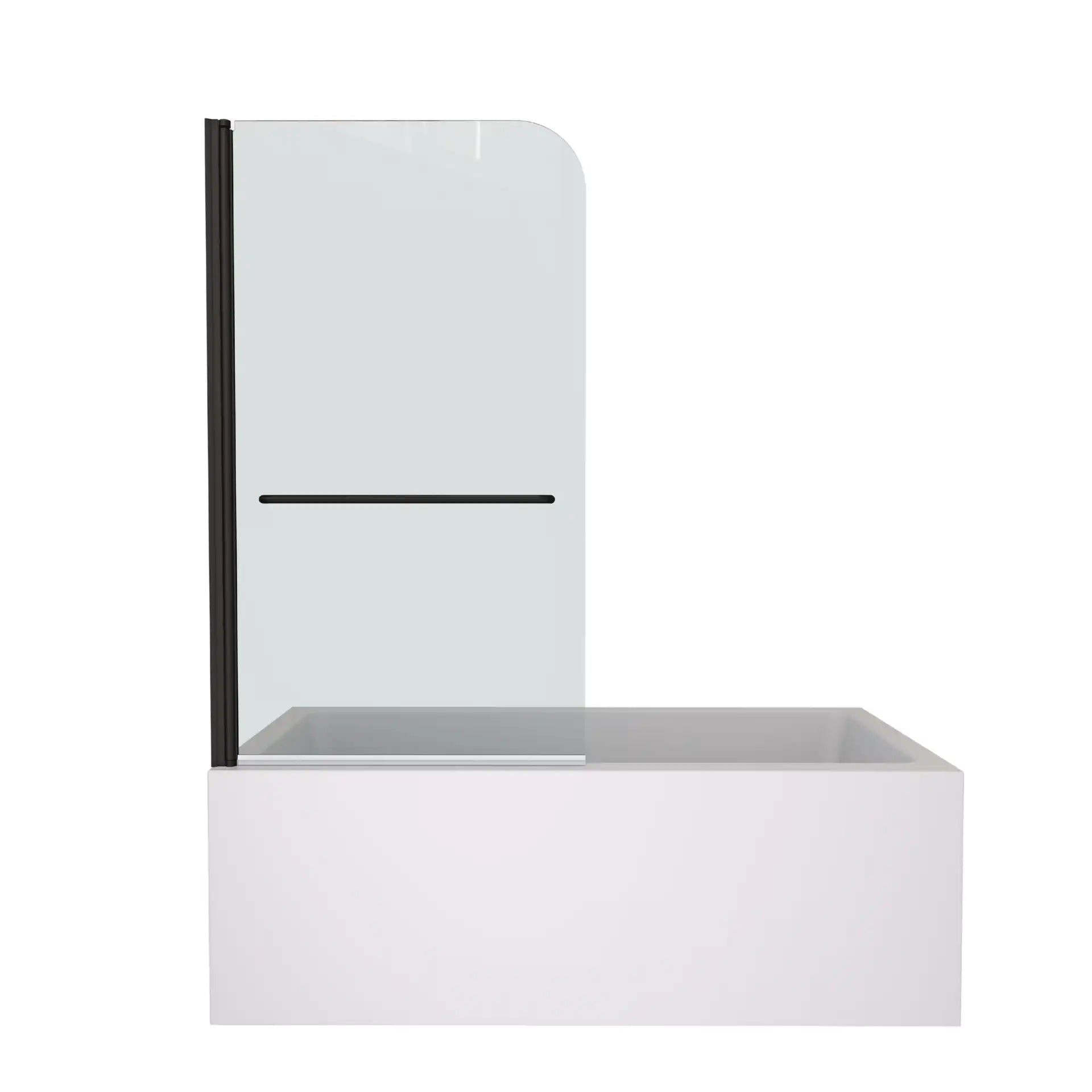Introduction
Few things will elevate a bathroom’s aesthetic like bathtub glass doors — clean, sleek and effortlessly modern. But nothing kills that spa-like vibe faster than glass that’s streaky, water-spotted and hellbent on refusing to stay pristine.
Crystal-clear bathtub glass doors don’t come about through a quick wipe down — it takes a strategy. From combating rough hard water stains to avoiding grime traps that hide within those lesser-seen crevices, professional upkeep guarantees your enclosure sparkles as brightly as day one. This guide breaks down the do’s and don’ts of bathtub glass door care — making tedious maintenance into an effortless ritual.
Table of Contents:
- The Science Behind Streaks: Why Hard Water is Your Glass Door’s Worst Enemy
- Silicon Savior: Avoiding Mold & Mildew with the Right Sealant
- Hidden Handle Hygiene: The Overlooked Grime Magnet (And How to Fix It)
- When to Call It Quits: Signs Your Glass Door Needs Replacement, Not Rescue:
- Conclusion
- FAQ
Those cloudy patches on your shower glass are more than just an annoyance; they are a clashing of clear glass and mineral trespassers. Hard water contains minerals like calcium and magnesium — and as it evaporates, these minerals leave behind deposits. These minerals ultimately leave behind the white streaks and foggy spots on your glass, which over time makes that nice new shower door of yours look rather shoddy. The longer you wait to clean it, the tougher it becomes to remove!
The Fix? Prevention + Easy Cleaning Tips
Vinegar Rinse: The Mighty Mineral Fighter
In a spray bottle, mix equal parts white vinegar and water- the world best descaler. After your shower, when the glass is still warm, spray the solution generously. Wait 5 minutes then use a soft cloth to wipe it dry. This will break down and dissolve the mineral buildup and leave your glass nice and clean. It’s simple, effective, and all-natural!
Squeegee in Seconds: The 10-Second Trick
This one is a game-changer! Leave a squeegee in your shower so you can wipe down the glass every time you use the shower. Eliminating the drying of water droplets means stopping 80% of the mineral deposition at the source. Seriously, it is the easiest thing you can do that has the most impact.
Say No to Scrubbers: Avoid Abrasive Materials
Scrubbing pads, especially those rough green ones, might seem like the answer, but they’re actually damaging your glass! These can leave behind little scratches that cause further dirt trapping, worsening the issue. Best to stick with a microfiber cloth or a soft sponge—they're low-scrubbing but still scrubs.
Bonus Tip: Glass Protection for Extra Shine
Want to take it a step further? Consider applying a water-repellent coating to your glass. It will create a protective layer that reduces water spots and soap scum buildup. It's an extra step that pays off in the long run by making cleaning even easier!

That simple silicone strip sealing your bathtub glass door? If it's the wrong one — or missing altogether, it can quickly become a breeding ground for unsightly black spots and stubborn grime. Moisture gets trapped, allowing mold and mildew to thrive, and before you know it, your shower’s condition deteriorates. Let’s fix that!
100% Mold-Resistant Silicone: The Gold Standard
Not all sealants are equal! Cheap rugs might appear to be a great find, but these rugs crack, fade, and decompose under moisture intervals which allows mold to grow. Use bathroom-grade, 100% silicone sealant for a solution that will stand the test of time.
Seal Like a Pro: Application Tips
Even the best sealant will fail when applying incorrectly. To create a perfect seal that lasts, follow these simple steps:
-
Remove Old Sealant: Use a utility knife or a sealant remover to carefully strip away old, worn-out silicone.
-
Clean Thoroughly: Use rubbing alcohol to wash the area to remove any mold spores and oils that could hinder the new sealant!
-
Apply New Sealant: After that, apply the silicone smoothly and continuously. In certain way pauses when urging may create weak spots.
-
Smooth the Bead: Use a silicone tool or a wet finger to smooth out the bead for a seamless, waterproof finish.
Be sure to let the sealant cure fully, usually 24 to 48 hours before exposing it to water.
Common Post-Installation Maintenance Errors
-
Avoid Cleaners With Bleach: They will compromise adhesion and make the silicone too brittle, leading to cracks and leaks.
-
Be Patient with Cure Time

Hidden Handle Hygiene: The Overlooked Grime Magnet (And How to Fix It)
Those often neglected handles and hinges on your bathtub glass door are ideal for soap scum, bacteria and fingerprints to proliferate. Grime can work its way into the moving parts and, if left untreated, lead to hinges seizing and the premature wear and tear of your door.
Deep-Clean Protocol
Toothbrush + Baking Soda: The Perfect Cleaning Duo
Use a baking soda and water paste to scrub the grooves on the handle and gaps around the hinges. The abrasive texture of the baking soda helps lift stubborn grime while being gentle on the surfaces. After rinsing, dry everything down properly to prevent water spots and/or buildup.
Grease Your Metal Parts: Keep Them Moving Smoothly
Apply a small knob of food-grade mineral oil on the metal parts of your hinges to prevent them from rusting and getting stuck. Minimizes friction and protects against rust, so your door will glide smoothly for years.
Revisit Rubber Gaskets: Check for Wear and Tear
The rubber gaskets that are used in your door seals can get old, crack, or become fragile over time. These spaces leave room for the water to get underneath the glass and develop showcases of mildew. Check for any defects & if you see any damage then its time to change the seals to protect it from water damage.
Bonus: A Clean Handle Isn’t Just About Hygiene
Keeping your handle clean and maintaining it regularly will not only keep it hygienic but will also add to the longevity of your bathtub glass door. Investing a couple of additional minutes looking after those out-of-sight spots will certainly keep all the parts working & looking terrific!

Even the most well-maintained bathtub glass doors have a shelf life. Ignoring these warning signs can put both safety and aesthetics at risk:
-
Cloudy Spots That Won’t Buff Out: If hard water etching has left permanent marks, it’s a sign that the glass is beyond repair.
-
Persistent Mold in Sealant: If mold keeps coming back despite cleaning, the sealant might have deep-rooted spores that can’t be fully removed.
-
Frame Corrosion or Loose Glass: A wobbly door or a corroded frame isn’t just unsightly—it’s a safety hazard.
The Upgrade Advantage

Conclusion: A Gleaming Glass Door Is a Habit, Not a Hassle
Spotless shower glass doors aren’t magic — they’re method. Your enclosure remains bright with minimal effort by recognizing hard water’s influence, resealing intention, embracing micro-cleaning rituals and addressing the hidden dirt. And when the fight becomes a losing battle? An on-trend upgrade reinvigorates your bathing sanctuary.
FAQ:
Q1: Are frosted glass doors easier to maintain than clear?
A: Frosted glass hides minor streaks better, but minerals still etch the surface. Maintenance routines remain similar.
Q2: What’s the average lifespan of bathtub glass doors?
A: With proper care, 10–15 years. Poor maintenance can halve that due to sealant failure or etched glass.
Q3: Can I replace just the sealant, or do I need a new door?
A: Sealant is replaceable (and often the first thing to fail). But if the glass is pitted or frames are corroded, replacement is smarter.
Related Articles
How to Clean a Bathtub: Expert Tips for Every Type of Tub
How to Maintain and Clean Your Electric Towel Rack Heater for Longevity


